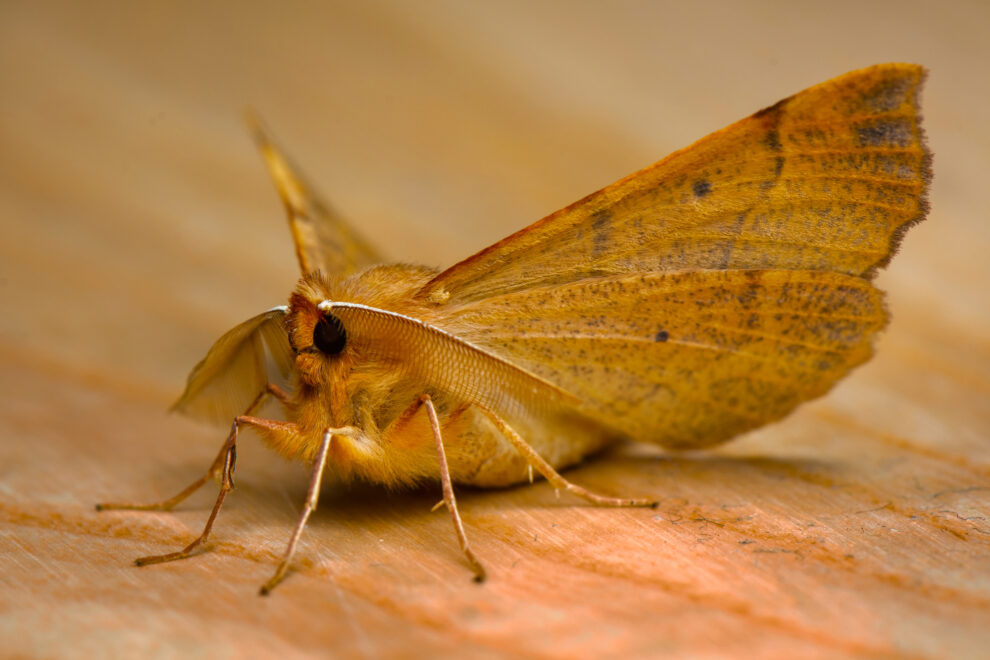Table of Contents
Moths may seem harmless, but a moth infestation can cause significant damage to your clothes, food, and other household items. This article will guide you through effective methods of moth control, from identification to extermination, and even prevention.
Identifying Moths
The first step in moth control is identifying the type of moth you’re dealing with. There are thousands of moth species, but only a few are common household pests. The most common are clothes moths and pantry moths.
Clothes moths are small and often go unnoticed until you find holes in your clothes. Pantry moths are a bit larger and are attracted to stored food products.
Moth Infestation
A moth infestation can be a serious issue. Clothes moths can ruin your wardrobe, while pantry moths can contaminate your food. If you notice small holes in your clothes or find small, sticky webs in your food, you might have a moth infestation.
Moth Extermination
Once you’ve identified a moth infestation, the next step is extermination. There are several methods for moth control, ranging from DIY home remedies to professional extermination services.
Home Remedies for Moths
There are several home remedies for moths that can be effective. For clothes moths, washing and drying your clothes at high temperatures can kill moth larvae. For pantry moths, throwing away infested food and thoroughly cleaning your pantry can help.
Professional Moth Control
If home remedies aren’t effective, you might need to consider professional moth control. Pest control professionals have the tools and expertise to effectively eliminate a moth infestation and can provide preventative treatments to keep moths from returning.
Moth Prevention
After dealing with a moth infestation, you’ll want to take steps to prevent future infestations. Here are some tips for moth prevention:
- Regularly clean and vacuum your home to remove moth eggs and larvae.
- Store clothes in sealed containers or garment bags.
- Store food in airtight containers.
- Regularly inspect your home for signs of moths.
Non-Toxic Moth Control
If you’re concerned about using pesticides in your home, there are non-toxic moth control options. These include pheromone traps, which attract and trap male moths, and natural repellents like cedar and lavender.
Moth Repellents
Moth repellents can be an effective part of your moth control strategy. There are many commercially available moth repellents, but you can also make your own using natural ingredients like cedar oil or lavender oil.
Moth Traps
Moth traps are another effective moth control method. These traps use pheromones to attract moths, which then get stuck on the sticky surface of the trap. Moth traps can be particularly effective for dealing with pantry moths.
Protecting Clothes from Moths
One of the biggest concerns with moths is the damage they can do to your clothes. Here are some tips for protecting clothes from moths:
- Regularly clean and vacuum your closets and drawers.
- Store clothes in sealed containers or garment bags.
- Use moth repellents in your closets and drawers.
In conclusion, moth control involves a combination of identification, extermination, and prevention. Whether you choose home remedies, professional services, or a combination of both, the key is to act quickly and take preventative measures to keep moths from returning.
Frequently Asked Questions About Moth Control
To help you further understand the process of moth control, here are some frequently asked questions and their answers:
1. What attracts moths to my home?
Moths are attracted to light and warmth, but different types of moths are attracted to different things. Clothes moths are attracted to natural fibres like wool and silk, while pantry moths are attracted to stored food products like grains and dried fruits.
2. Are moths harmful?
While moths are not harmful to humans or pets, they can cause significant damage to your clothes and food. A severe moth infestation can be costly and frustrating to deal with.
3. How can I prevent moths from entering my home?
There are several steps you can take to prevent moths from entering your home. These include keeping your home clean, storing food and clothes properly, and using moth repellents and traps.
4. Are there any home remedies for getting rid of moths?
Yes, there are several home remedies for getting rid of moths. These include washing and drying clothes at high temperatures, throwing away infested food, cleaning your pantry thoroughly, and using natural moth repellents.
5. Should I use mothballs to get rid of moths?
While mothballs can be effective at repelling moths, they are also toxic and can be harmful to humans and pets. It’s best to use safer alternatives like moth traps and natural repellents.
Conclusion
Moth control can seem daunting, but with the right knowledge and tools, you can effectively deal with a moth infestation and prevent future infestations. Whether you choose to use home remedies, professional services, or a combination of both, the key is to act quickly and take preventative measures to keep moths from returning.
Remember, the key to successful moth control is not just to eliminate the existing infestation, but also to prevent future infestations. By understanding what attracts moths to your home and how to make your home less appealing to them, you can keep your home moth-free.
I hope you find this guide helpful in your quest for effective moth control. If you have any further questions or need professional assistance, don’t hesitate to reach out to Bugwise Pest Control.
You may also enjoy reading this article
Was This Article Helpful?
- Please provide feedback and comments to help us improve our content.
- Share your experiences and any additional tips you have for dealing with pests.
Share this Post



